Advanced Algorithmic Design Strategies
In this seminar, we explored the dual geometric/topological computing nature of spatial systems, based on iterative logics explored through grasshopper and the Anemone plug-in. After investigating iterative algorithm strategies we applied them in urban scale size architecture. This process starts with the definition of the basic components as computational building blocks and their embedded information.
First, we explore a 2D pattern called Penrose patter:
Aperiodic Urban Design
An aperiodic set of tiles is a set of shapes with the property that, though the whole Euclidean plane can be covered by non-overlapping replicas of the shape, no periodically repeating tiling pattern can be constructed from them. Based on the 2D aperiodic pattern produced by Dr. Roger Penrose, we recreated 3D shapes and imposed rules on how they can produce, simultaneously, solids and voids. The tiling we studied has certain characteristics that needed to be fulfilled in order to obtain the right pattern:
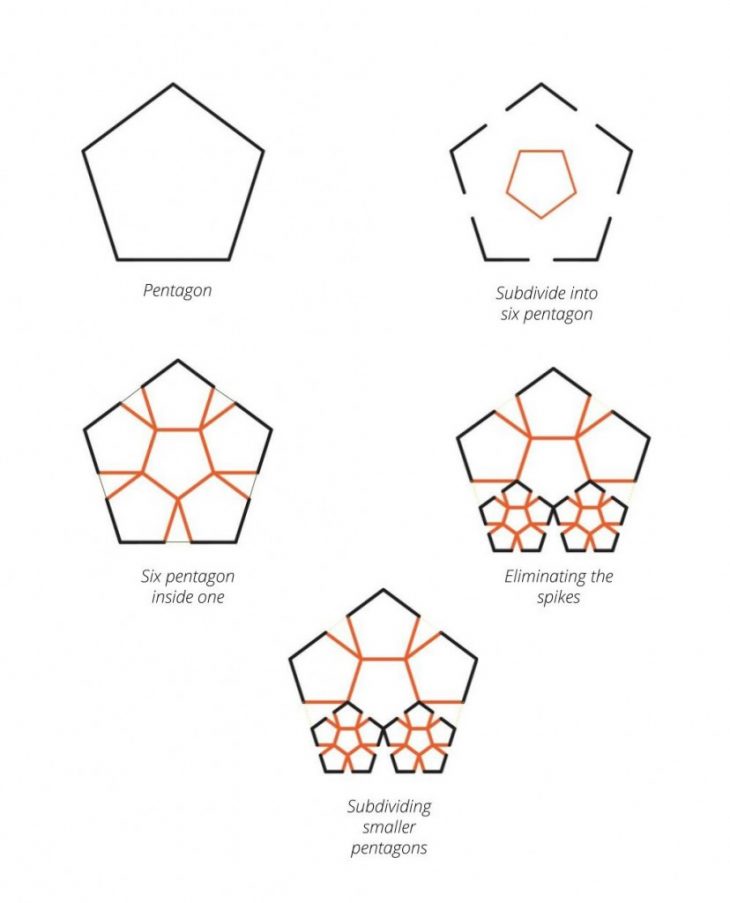
- Reflection symmetry + fivefold symmetry
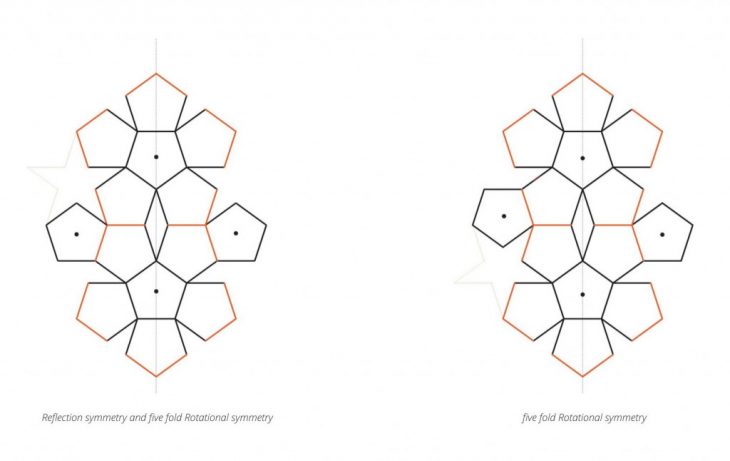
- Source of repetition contains 3 pentagons, 2 rhombi, 1 three-spiked shape, and a ring of 10 pentagons surrounding these shapes.
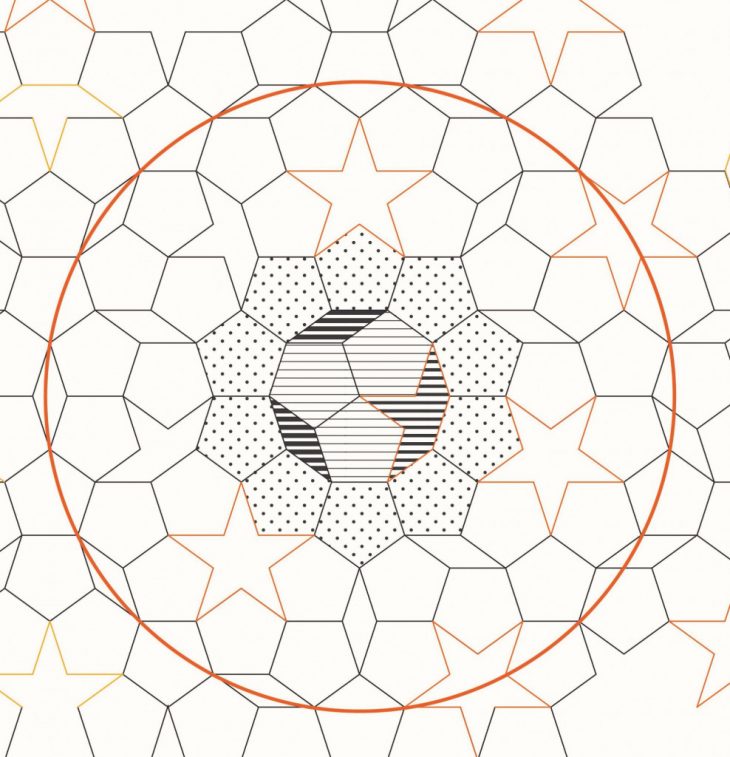
- Scaling self-similarity: fractal factor
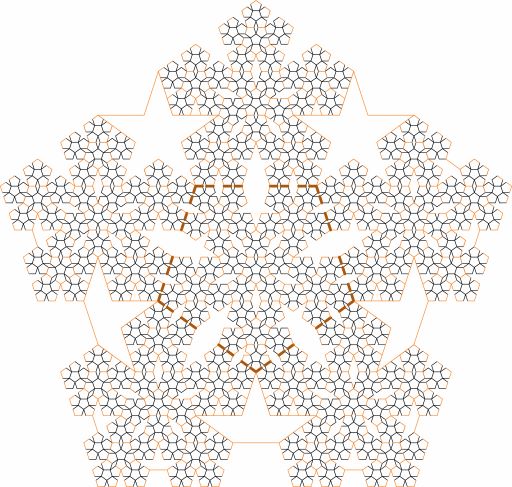
The Exploration:

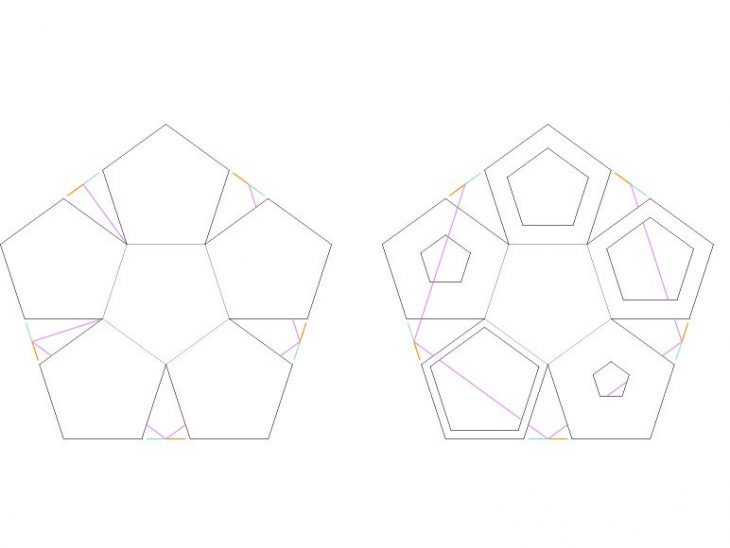
Component A:
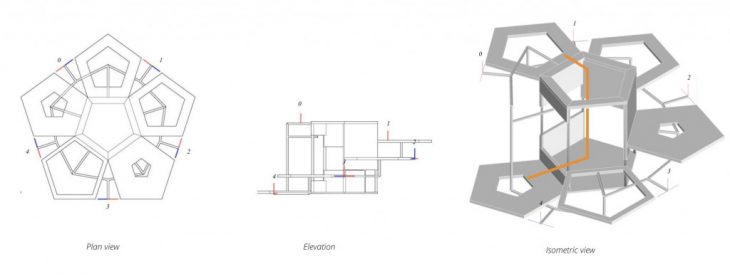
Component B:
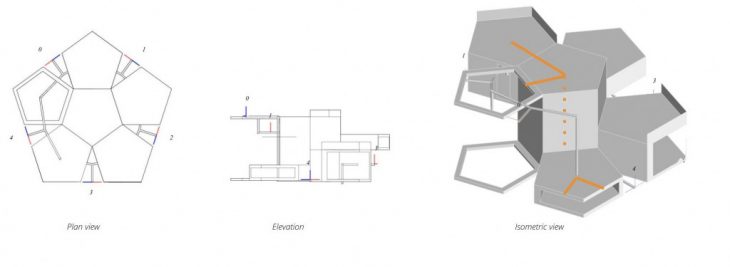
Chosen Heuristics:
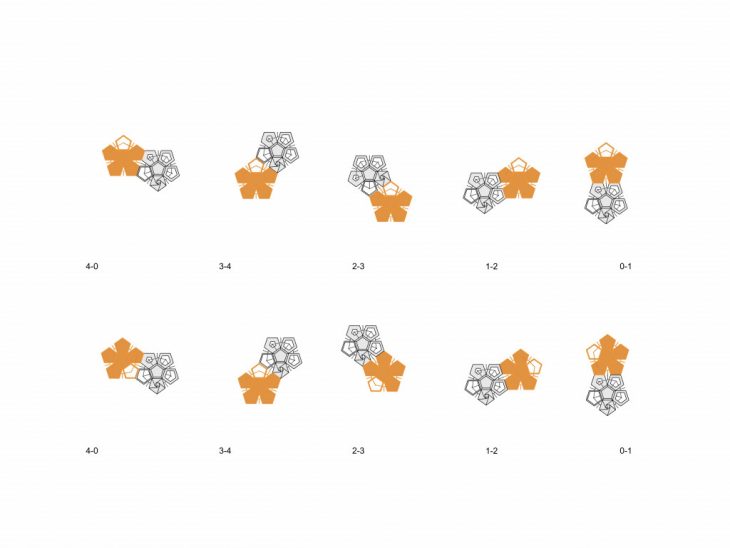
Components Addition:
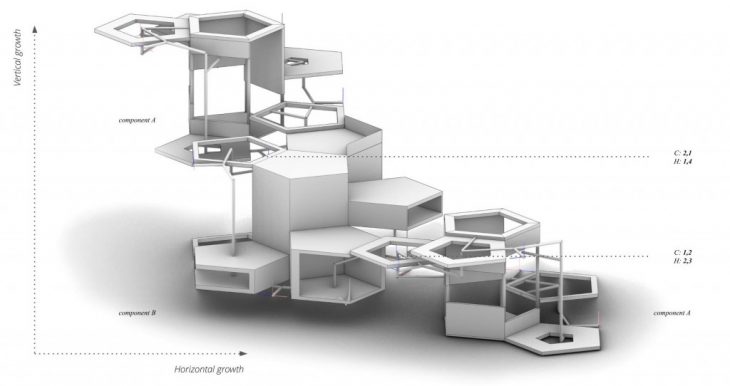
Iteration:
Number of iteration: 150 / Number of components: 73

Number of iteration: 500 / Number of components: 153
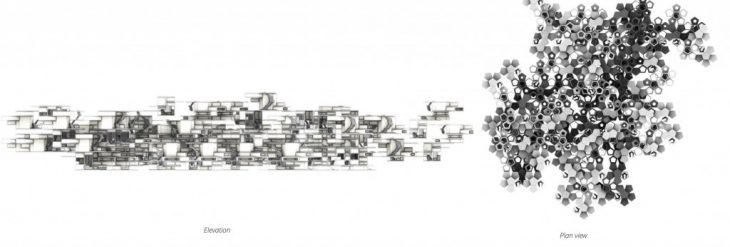
Post Processing Strategies:
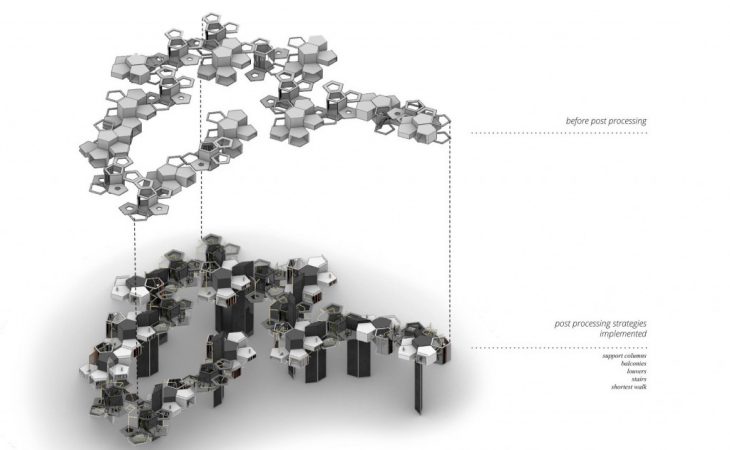
Architectural application scenarios:
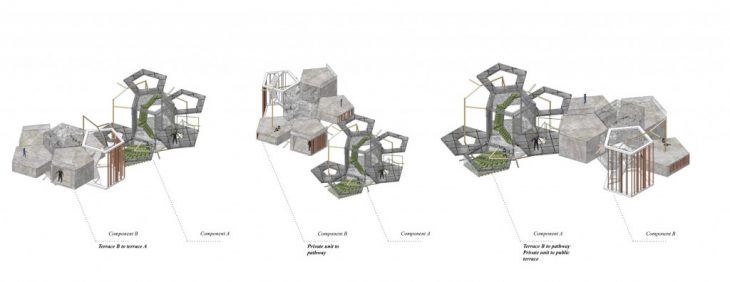
Urban Context:
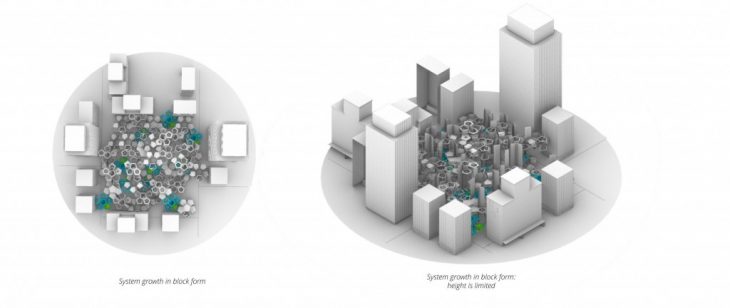
Based on the 2D aperiodic pattern produced by Dr. Roger Penrose, we recreated 3D shapes and imposed rules on how they can produce, simultaneously, solids and voids. By creating two components and following the rules set in the algorithm we are able to manipulate how solid “private” spaces connect to voids “public” spaces. Once we have each connection available of the two components, we can set rules to how they respond to the connection by adding supports or architectural elements through post-processing tools.
The result is an urban intervention of public and private spaces that can be connected to each other in four different levels in each component, allowing for vertical and horizontal growth of the system.
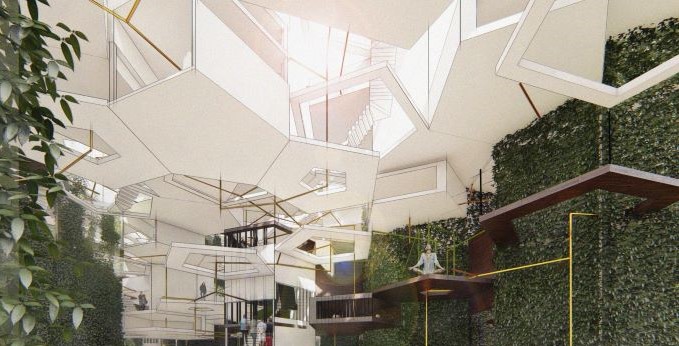
Aperiodic urban intervention is a project of IAAC, Institute for Advanced Architecture of Catalonia developed in the 2019/20 by
Students: Lilett Ricaurte, Matin Darabi, Teddy Fadous
Tutors: Alessio Erioli, Andrea Graziano
